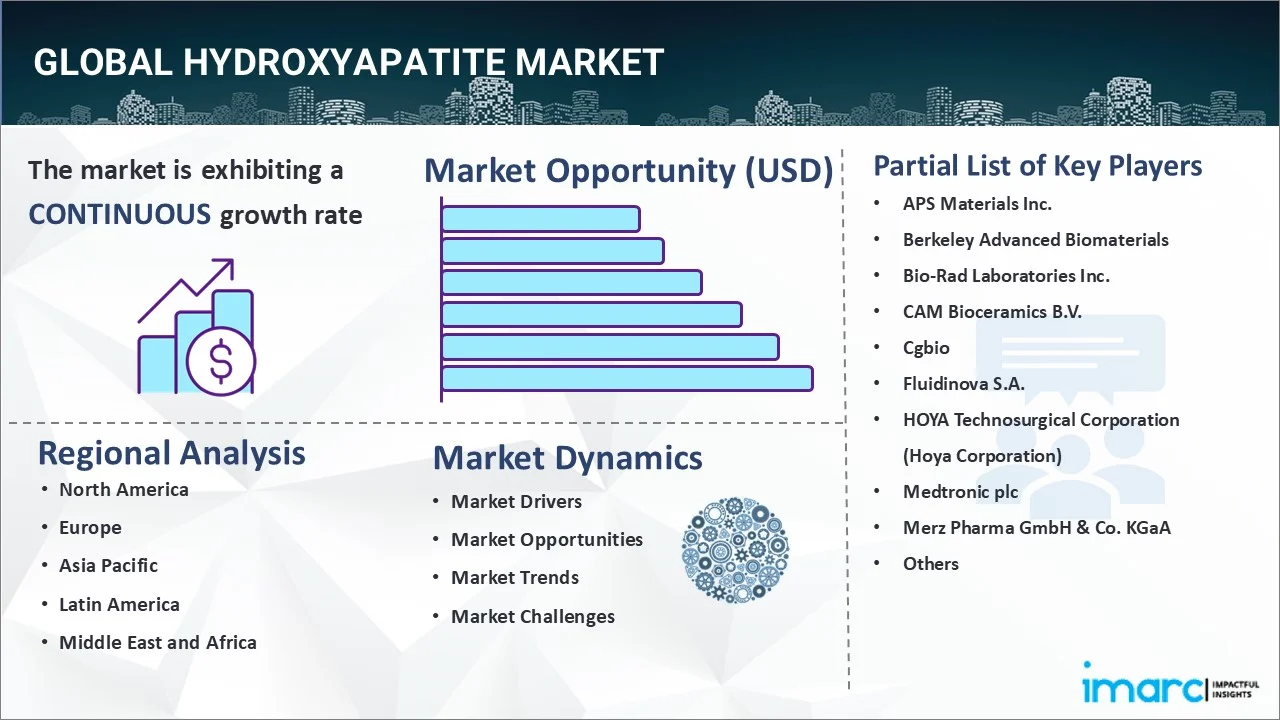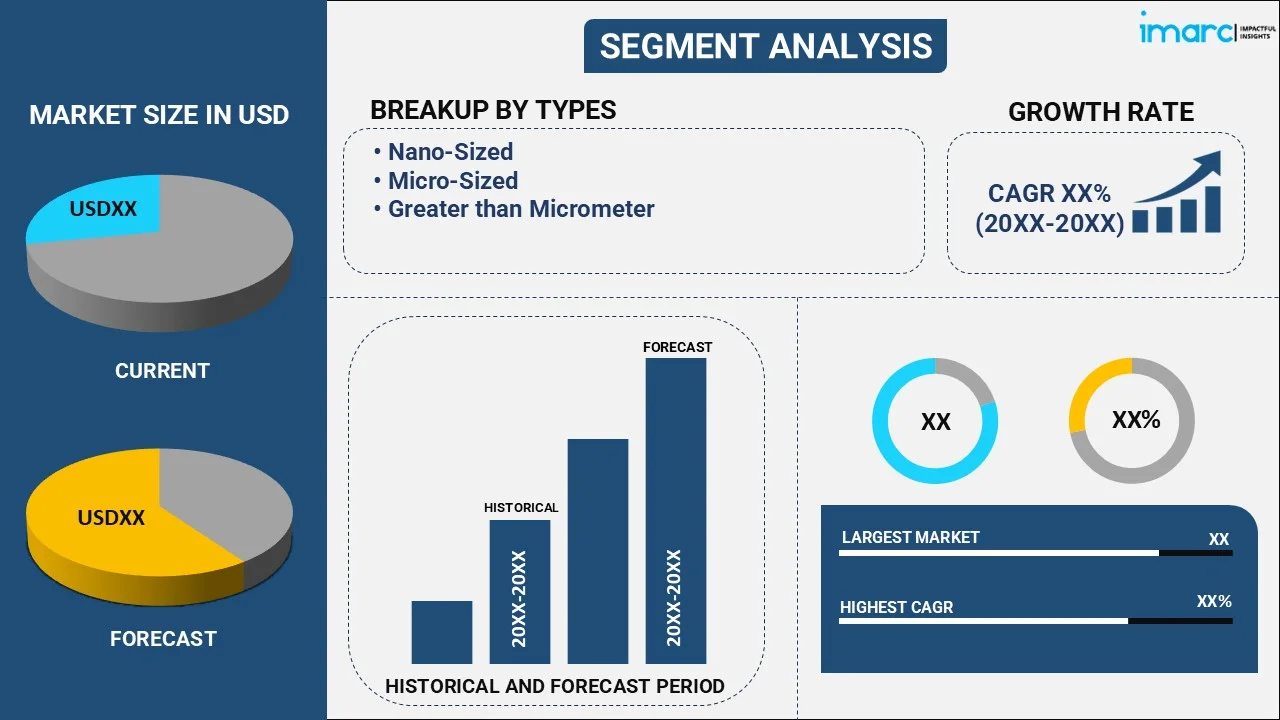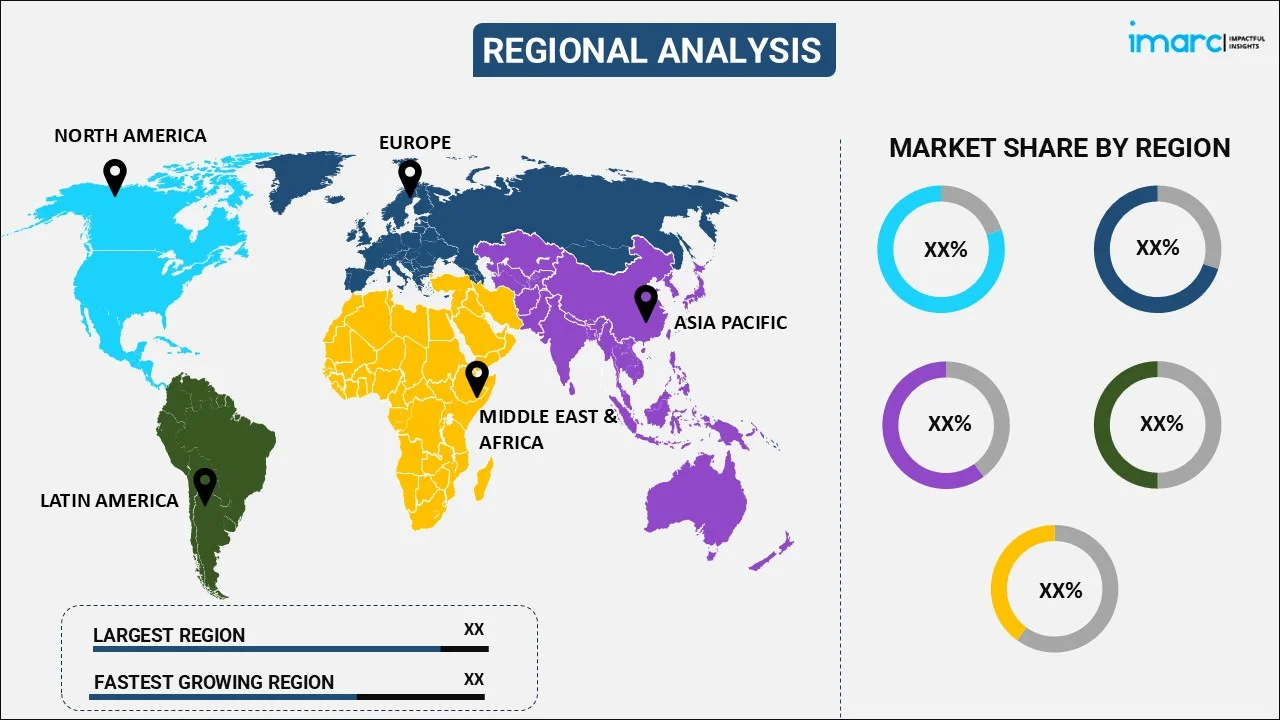
Hydroxyapatite Market Report by Type (Nano-Sized, Micro-Sized, Greater than Micrometer), Application (Orthopedic, Dental Care, Plastic Surgery, and Others), and Region 2025-2033
Market Overview:
The global hydroxyapatite market size reached USD 2.72 Billion in 2024. Looking forward, IMARC Group expects the market to reach USD 4.22 Billion by 2033, exhibiting a growth rate (CAGR) of 4.94% during 2025-2033. The growing advancements in medical applications, rising focus on regenerative medicines that stimulate the natural healing procedures of the body, and increasing utilization of hydroxyapatite coatings on metal implants to enhance their biocompatibility are some of the major factors propelling the market.
|
Report Attribute
|
Key Statistics
|
|---|---|
|
Base Year
|
2024 |
|
Forecast Years
|
2025-2033
|
|
Historical Years
|
2019-2024
|
| Market Size in 2024 | USD 2.72 Billion |
| Market Forecast in 2033 | USD 4.22 Billion |
| Market Growth Rate 2025-2033 | 4.94% |
Hydroxyapatite refers to a naturally occurring mineral that is used as the main substance of the inorganic parts of bones and teeth in vertebrates. It is a form of calcium phosphate and can be produced in laboratories. It is available as natural, synthetic, and nanocrystalline hydroxyapatite, which is characterized by extremely small crystal sizes, giving it a high surface area. It is employed in drug delivery systems and tissue engineering due to its enhanced bioactivity. It is also used in toothpaste and dental fillings to promote remineralization and repair of tooth enamel.

Hydroxyapatite Market Trends/Drivers:
Growing advancements in biomedical applications
The growing advancements in biomedical applications are positively influencing the hydroxyapatite market. Hydroxyapatite is widely used in bone tissue engineering, where it serves as a scaffold material to support the growth of new bone tissues. Advancements in this field are leading to the development of more sophisticated and effective bone scaffolds that can mimic the natural structure of bone, promoting better tissue regeneration. Hydroxyapatite coatings on orthopedic implants enhance their osseointegration, reducing the risk of implant failure and enhancing patient outcomes. Furthermore, as medical researchers continue to innovate in the field of orthopedics, the demand for hydroxyapatite-coated implants is rising.
Rising focus on regenerative medicine
The rising focus on regenerative medicine is positively influencing the growth of the hydroxyapatite market. Regenerative medicine focuses on developing therapies and techniques that stimulate the natural healing procedures of the body to regenerate or repair damaged tissues and organs. Hydroxyapatite is a key material in this field as it provides a biocompatible scaffold for the growth of new tissue. It can be used in bone grafts and implants to facilitate the regeneration of bone tissue, making it an essential component in regenerative medicine approaches. Moreover, regenerative medicine approaches often involve the use of biomaterials for the development of implants that support tissue regeneration. Furthermore, hydroxyapatite-coated implants promote better integration with surrounding bone tissue, lowering the risk of implant rejection or failure. This is especially relevant in orthopedics, where joint replacements and other implants are common.
Increasing popularity of 3D printing
The increasing usage of 3D printing in the healthcare sector is positively influencing the hydroxyapatite market. Hydroxyapatite is a bioactive ceramic material that is widely used in medical applications, particularly in bone tissue engineering and orthopedic implants. Additionally, 3D printing allows for precise and customized fabrication of complex shapes and structures. This is particularly beneficial in medical applications where patient-specific implants or scaffolds are required. The rapid prototyping capabilities of 3D printing allow researchers and manufacturers to iterate designs quickly. This can accelerate the research and development of new hydroxyapatite-based products, leading to advancements in medical technology and improved patient care.
Key Market Segmentation:
IMARC Group provides an analysis of the key trends in each segment of the global hydroxyapatite market report, along with forecasts at the global, regional, and country levels for 2025-2033. Our report has categorized the market based on type and application.
Breakup by Type:

- Nano-sized
- Micro-sized
- Greater than Micrometer
Nano-sized dominate the market
The report has provided a detailed breakup and analysis of the market based on the type. This includes nano-sized, micro-sized, and greater than micrometer. According to the report, nano-sized represented the largest segment.
Nano-sized hydroxyapatite is a form of hydroxyapatite, which is a naturally produced mineral form of calcium apatite. Nano-sized hydroxyapatite is biocompatible and mimics the mineral component of bone. It is used in orthopedic and dental applications for bone grafts, implants, and scaffold materials to enhance bone regeneration. It is utilized in toothpaste formulations to help remineralize enamel, reduce tooth sensitivity, and prevent cavities. It can be employed as a carrier for drug delivery, allowing controxlled and targeted release of therapeutic agents. Nano-hydroxyapatite is used in cosmetic products like sunscreens and anti-aging creams to provide ultraviolet (UV) protection and improve the appearance of skin by promoting collagen synthesis.
Breakup by Application:
- Orthopedic
- Dental Care
- Plastic Surgery
- Others
Orthopedic holds the largest share in the market
A detailed breakup and analysis of the market based on the application have also been provided in the report. This is orthopedic, dental care, plastic surgery, and others. According to the report, orthopedic accounted for the largest market share.
Hydroxyapatite is often used as a bone graft substitute or filler material. It can be implanted into bone defects or voids to promote bone regeneration and healing. Implants used in orthopedic surgeries, such as joint replacements, can be coated with a layer of hydroxyapatite. This coating enhances the biocompatibility of the implant and encourages the formation of a strong bond between the implant and the bone of the patient. Hydroxyapatite can be used to repair various types of bone defects, including non-unions (failed bone healing), segmental defects (where a portion of the bone is missing), and cleft palate defects.
Breakup by Region:

- North America
- United States
- Canada
- Asia-Pacific
- China
- Japan
- India
- South Korea
- Australia
- Indonesia
- Others
- Europe
- Germany
- France
- United Kingdom
- Italy
- Spain
- Russia
- Others
- Latin America
- Brazil
- Mexico
- Others
- Middle East and Africa
North America exhibits a clear dominance, accounting for the largest hydroxyapatite market share
The market research report has also provided a comprehensive analysis of all the major regional markets, which include North America (the United States and Canada); Asia Pacific (China, Japan, India, South Korea, Australia, Indonesia, and others); Europe (Germany, France, the United Kingdom, Italy, Spain, Russia, and others); Latin America (Brazil, Mexico, and others); and the Middle East and Africa. According to the report, North America accounted for the largest market share.
North America held the biggest market share due to the increasing demand for hydroxyapatite in the medical sector for making orthopedic implants, dental coating, and bone grafts. Besides this, rising advancements in healthcare to provide quality healthcare services to patients are propelling the growth of the market. In addition, the increasing research operations on understanding the potential of biomaterials in manufacturing regenerative medicine are contributing to the growth of the market. Apart from this, the rising demand for fluoride alternatives in dental care products is supporting the growth of the market.
Asia Pacific is estimated to expand further in this domain due to the increasing investment in biomedical research for drug delivery systems, tissue engineering, and as a scaffold for cell growth, which is bolstering the growth of the market.
Competitive Landscape:
Key market players are focusing on developing new and improved hydroxyapatite materials with enhanced properties, such as better biocompatibility, mechanical strength, and bioactivity. They are also expanding their product portfolios to offer a wide range of hydroxyapatite-based products, catering to different applications and customer needs. Top companies are investing in stringent quality control measures and certifications to meet regulatory standards. They are also focusing on expanding their market presence geographically by targeting emerging markets or regions with growing healthcare industries by setting up distribution networks or partnerships with local distributors. Leading companies are offering customized hydroxyapatite solutions based on specific customer requirements. They are also adopting effective marketing strategies that highlight the benefits of hydroxyapatite over other materials.
The report has provided a comprehensive analysis of the competitive landscape in the market. Detailed profiles of all major companies have also been provided. Some of the key players in the market include:
- APS Materials Inc.
- Berkeley Advanced Biomaterials
- Bio-Rad Laboratories Inc.
- CAM Bioceramics B.V.
- Cgbio
- Fluidinova S.A.
- HOYA Technosurgical Corporation (Hoya Corporation)
- Medtronic plc
- Merz Pharma GmbH & Co. KGaA
- SigmaGraft Biomaterials
- SofSera Corporation
- Taihei Chemical Industrial Co. Ltd.
- Zimmer Biomet
Recent Developments:
- In 2020, CAM Bioceramics B.V. announced that it received the MIT South Holland grant for the second consecutive year for the development and assessment of calcium phosphate together with #VCFix to stimulate the bone-implant attachment and natural healing process.
- In July 2023, Cgbio announced that they acquired a permit from the Pharmaceuticals and Medical Devices Agency (PMDA) in Japan for Novomax-Fusion, which is a next-generation osteo-active bioglass ceramic cage.
Hydroxyapatite Market Report Scope:
| Report Features | Details |
|---|---|
| Base Year of the Analysis | 2024 |
| Historical Period | 2019-2024 |
| Forecast Period | 2025-2033 |
| Units | Billion USD |
| Scope of the Report | Exploration of Historical Trends and Market Outlook, Industry Catalysts and Challenges, Segment-Wise Historical and Predictive Market Assessment:
|
| Types Covered | Nano-Sized, Micro-Sized, Greater than Micrometer |
| Applications Covered | Orthopedic, Dental Care, Plastic Surgery, Others |
| Regions Covered | Asia Pacific, Europe, North America, Latin America, Middle East and Africa |
| Countries Covered | United States, Canada, Germany, France, United Kingdom, Italy, Spain, Russia, China, Japan, India, South Korea, Australia, Indonesia, Brazil, Mexico |
| Companies Covered | APS Materials Inc., Berkeley Advanced Biomaterials, Bio-Rad Laboratories Inc., CAM Bioceramics B.V., Cgbio, Fluidinova S.A., HOYA Technosurgical Corporation (Hoya Corporation), Medtronic plc, Merz Pharma GmbH & Co. KGaA, SigmaGraft Biomaterials, SofSera Corporation, Taihei Chemical Industrial Co. Ltd., Zimmer Biomet, etc. |
| Customization Scope | 10% Free Customization |
| Post-Sale Analyst Support | 10-12 Weeks |
| Delivery Format | PDF and Excel through Email (We can also provide the editable version of the report in PPT/Word format on special request) |
Key Benefits for Stakeholders:
- IMARC’s industry report offers a comprehensive quantitative analysis of various market segments, historical and current market trends, market forecasts, and dynamics of the hydroxyapatite market from 2019-2033.
- The research report provides the latest information on the market drivers, challenges, and opportunities in the global hydroxyapatite market.
- The study maps the leading, as well as the fastest-growing, regional markets. It further enables stakeholders to identify the key country-level markets within each region.
- Porter's five forces analysis assists stakeholders in assessing the impact of new entrants, competitive rivalry, supplier power, buyer power, and the threat of substitution. It helps stakeholders to analyze the level of competition within the hydroxyapatite industry and its attractiveness.
Key Questions Answered in This Report
The global hydroxyapatite market was valued at USD 2.72 Billion in 2024.
We expect the global hydroxyapatite market to exhibit a CAGR of 4.94% during 2025-2033.
The rising adoption of hydroxyapatite to coarsen metal implant surfaces, bone grafts or fillers, orthopedic and dental care devices, etc., as it offers high rigidity, better enamel remineralization than saliva, compositional closeness to bone minerals, etc., is primarily driving the global hydroxyapatite market.
The sudden outbreak of the COVID-19 pandemic had led to the implementation of stringent lockdown regulations across several nations, resulting in the temporary halt in numerous production activities for hydroxyapatite.
Based on the type, the global hydroxyapatite market has been segregated into nano-sized, micro-sized, and greater than micrometer. Among these, nano-sized currently exhibits clear dominance in the market.
Based on the application, the global hydroxyapatite market can be bifurcated into orthopedic, dental care, plastic surgery, and others. Currently, orthopedic holds the largest market share.
On a regional level, the market has been classified into North America, Asia-Pacific, Europe, Latin America, and Middle East and Africa, where North America currently dominates the global market.
Some of the major players in the global hydroxyapatite market include APS Materials Inc., Berkeley Advanced Biomaterials, Bio-Rad Laboratories Inc., CAM Bioceramics B.V., Cgbio, Fluidinova S.A., HOYA Technosurgical Corporation (Hoya Corporation), Medtronic plc, Merz Pharma GmbH & Co. KGaA, SigmaGraft Biomaterials, SofSera Corporation, Taihei Chemical Industrial Co. Ltd., and Zimmer Biomet.
Need more help?
- Speak to our experienced analysts for insights on the current market scenarios.
- Include additional segments and countries to customize the report as per your requirement.
- Gain an unparalleled competitive advantage in your domain by understanding how to utilize the report and positively impacting your operations and revenue.
- For further assistance, please connect with our analysts.
 Inquire Before Buying
Inquire Before Buying
 Speak to an Analyst
Speak to an Analyst
 Request Brochure
Request Brochure
 Request Customization
Request Customization




.webp)




.webp)












